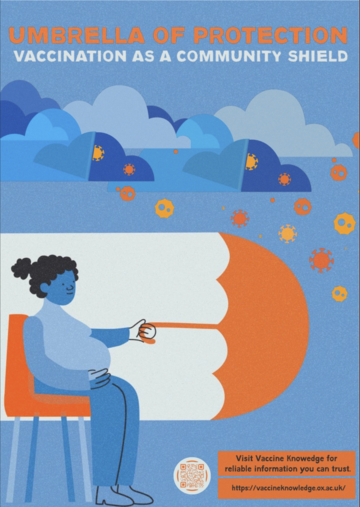|
When a high percentage of the population is vaccinated, it is difficult for infectious diseases to spread because there are not many people who can be infected. For example, if someone with measles is surrounded by people who are vaccinated against measles, the disease cannot easily be passed on to anyone, and it will quickly disappear again. This is called ‘herd immunity’, 'community immunity' or 'herd protection', and it gives protection to vulnerable people such as newborn babies, elderly people and those who are too sick to be vaccinated. Herd immunity does not protect against all vaccine-preventable diseases. The best example of this is tetanus, which is caught from bacteria in the environment, not from other people who have the disease. No matter how many people around you are vaccinated against tetanus, it will not protect you from tetanus. |





